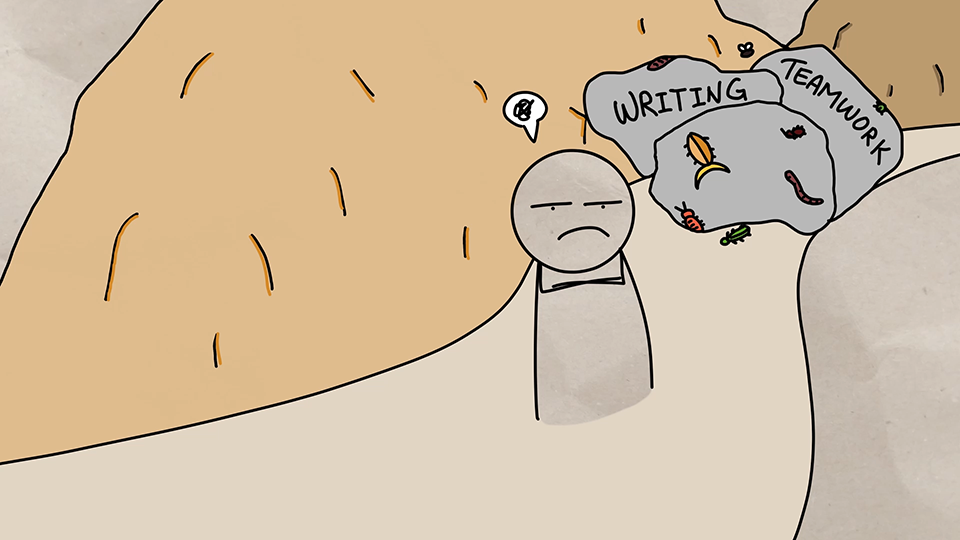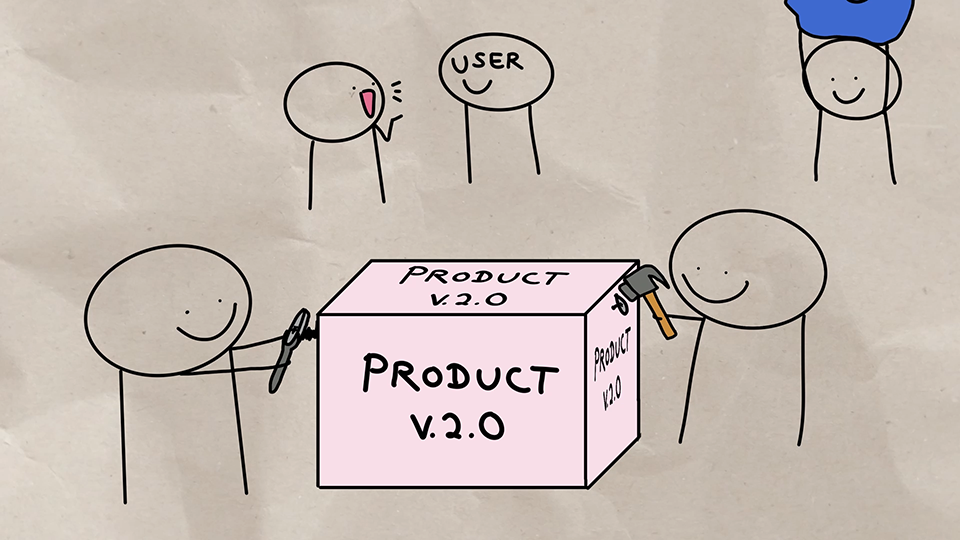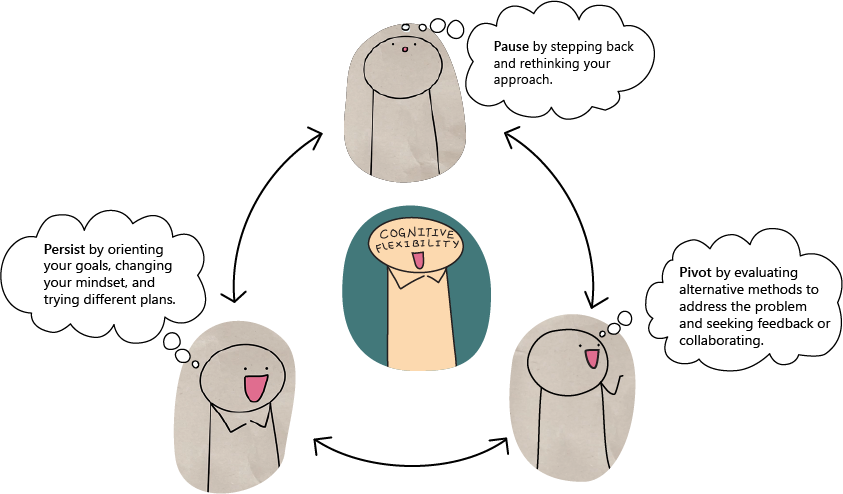Pivot and persist in challenging situations
You've examined the importance of enhancing cognitive flexibility when people are learning. You now want to explore other strategies to help your workshop participants pivot and persist in challenging situations.
Explore strategies to pivot and persist
Challenging situations are common in workplace or educational environments. This is especially true in the tech space.
Have you ever felt like quitting a course or a project partway through because you felt like a failure or just didn't get it? Or have you wondered exactly how should you get started?

One of the best ways to become more cognitively flexible is to expose yourself to new experiences and ways of doing things. If you're not sure where to start, this table provides a few steps that you can take:
| Step | Description | Example |
|---|---|---|
| Stop | Pause to reflect on the challenge. | How can I revisit my understanding of the problem? |
| Link | Make connections between various angles of the situation. | Is the current problem related to any other knowledge gaps? Are there any other skills that I can use to overcome this challenge? |
| Think | Visualize new possibilities and consider alternatives. | What are my assumptions about this challenge? Can I think of an alternative solution or method of solving the problem? |
| Act | Formulate a new plan. | What will my new approach be? What can I do differently from before? |
Pivot rather than panic in the face of difficulty
People have their own unique ways of reacting to problems. Some people might get stuck when attempting to solve a problem. If you're helping a person who seems stuck, try to give them a moment before nudging with them with a tip. Encourage them to ask for clarification on the problem given to them. You can ask them to articulate their thought process to help clarify where they're stuck. And they can benefit greatly by collaborating with others and brainstorming new ideas.

Common reactions to setbacks
How do you react when you're faced with a setback or disruption? Explore the following reactions to an unexpected setback. Then examine how open you are to stretching beyond your comfort zone.
I find it difficult to abandon an approach even when it's clearly not working for me.
If one door closes, I try to find another door or a window.
I take time to reflect and pull out the useful information from negative feedback so I can move forward.
I'm likely to give up if an expert tells me that I'm not cut out for a task.
I'm open to change.
I like to explore new perspectives.
I have a set list of things I know how to do, and I can't do anything new.
I ask for help from someone else without specifying how the person can help.
I spend more time rehashing an exchange with difficult feedback than I do revising my work.
Do any of the preceding reactions to an unexpected obstacle feel familiar to you? Which of these reactions indicate a higher level of cognitive flexibility? Do you seek feedback from others? Do you have a strategy for unpacking the feedback?
Scenarios and strategies
What kind of situations might you face where cognitive flexibility could be a useful tool? This list illustrates some scenarios that you or the other workshop participants might come across in the tech industry:
Recovering from a situation when your mind goes blank during an interview or conversation
Knowing how to respond when your supervisor or instructor questions your work from an angle you know nothing about
Adapting during a presentation when the tech fails
Pivoting on a plan when your team faces a setback on a group project
Knowing how to reset when your team's motivation is declining
Asking for clarifying feedback from an instructor, supervisor, or peer when the feedback isn't specific or clear
Resetting expectations when it's clear you volunteered for something you can no longer commit to
Here are some strategies that you and the other participants can use to enhance cognitive flexibility:
Ask questions to clarify your doubts about the problem.
Adapt your approach and be ready to change your approach when new information suggests you should.
View challenges as opportunities.
Welcome new ideas and opinions, even if they seem quite different at first.
Respond to criticism positively and not by reacting in a defensive manner.
Orient your goals to broaden your knowledge, experience, and skill set.
Seek opinions and feedback from other people.
Question your own long-standing assumptions, and encourage others to question theirs.
Objectively analyze situations: evaluate the pros, cons, and implications of various courses of action.
Analyze a wide variety of options, visualize new possibilities, and formulate fresh approaches.
Identify patterns across unrelated events and information.
